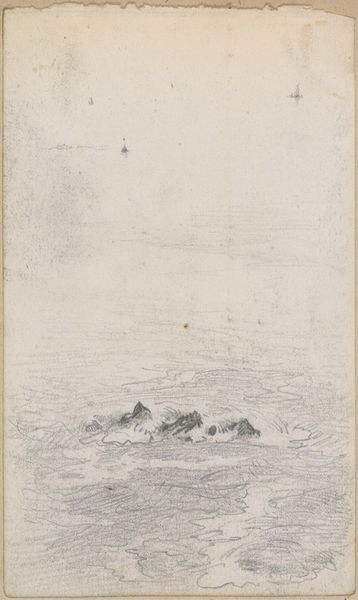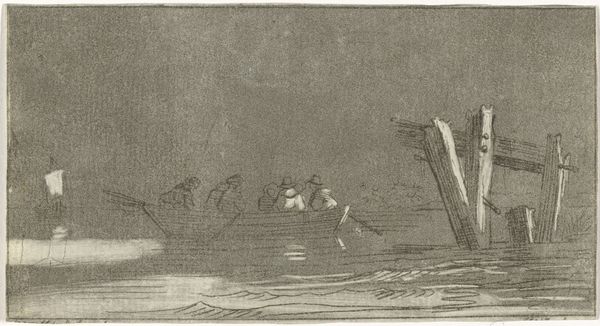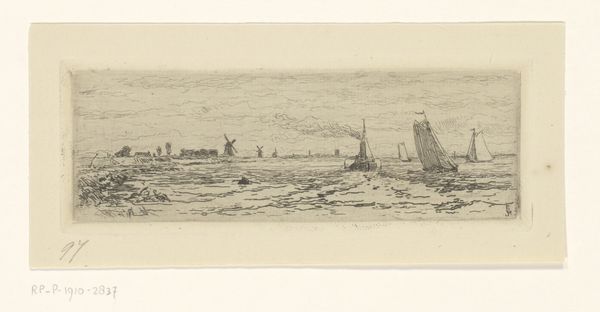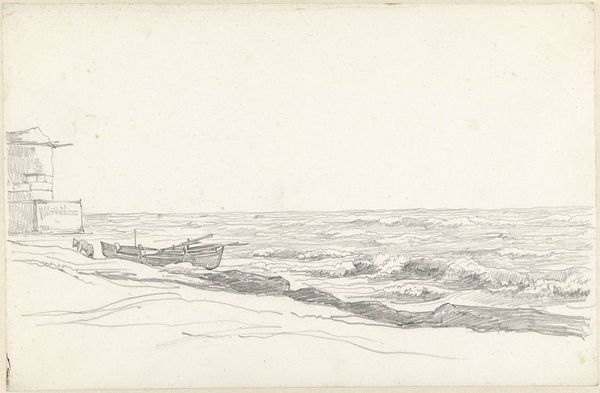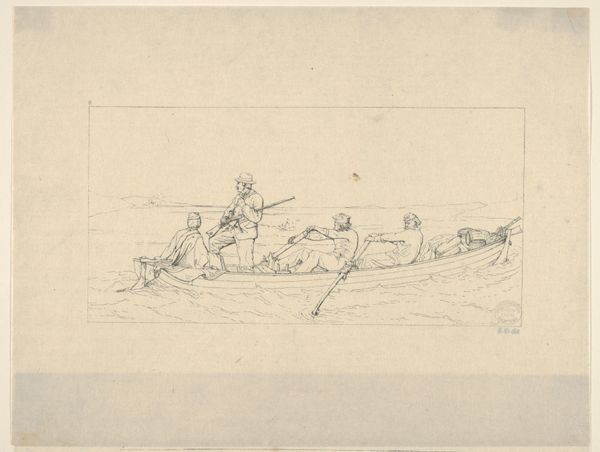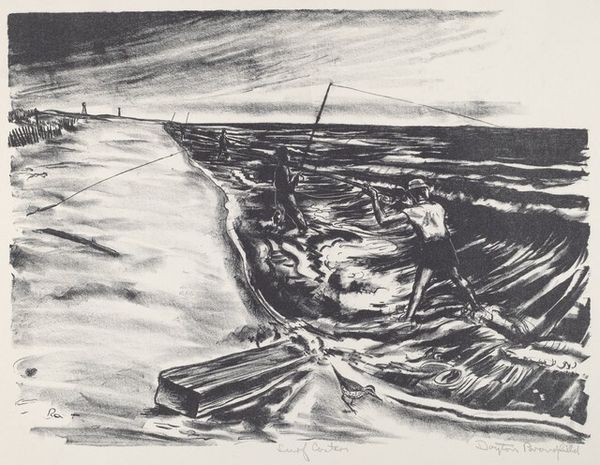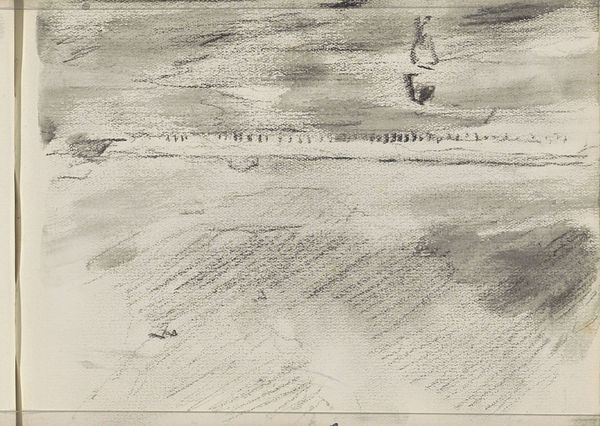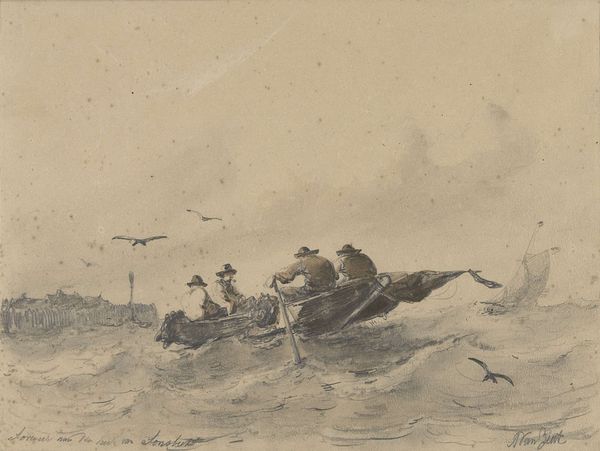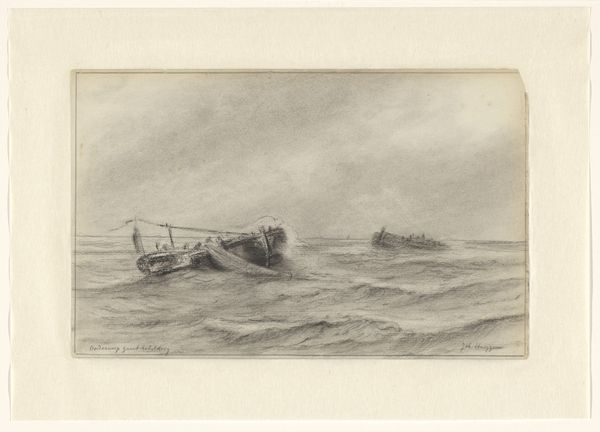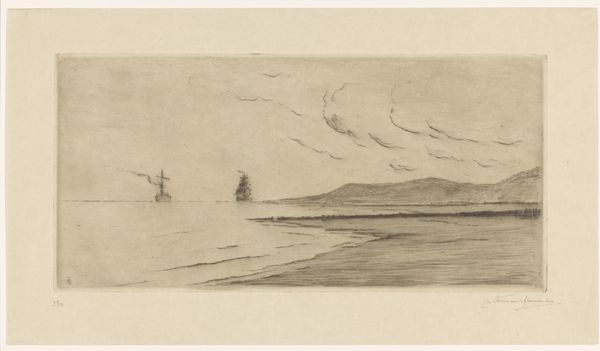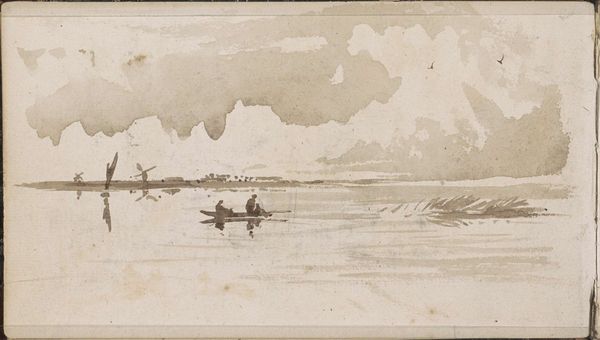
drawing, pencil
#
pencil drawn
#
drawing
#
light pencil work
#
dutch-golden-age
#
impressionism
#
pencil sketch
#
landscape
#
pencil drawing
#
pencil
#
pencil work
#
genre-painting
#
realism
Dimensions: height 177 mm, width 296 mm
Copyright: Rijks Museum: Open Domain
Editor: This drawing, "Schelpenvisser," by Jozef Israëls, from around 1834 to 1911, captures a figure wading through the water, net in hand. The subdued pencil strokes give it a somewhat melancholic mood, highlighting the solitary nature of labor. What cultural context am I missing here? Curator: Indeed, the solitary figure resonates with a broader cultural shift in 19th-century art. Israëls belonged to the Hague School, deeply rooted in realism. They aimed to depict the lives of ordinary people, particularly the working class. The "Schelpenvisser" reflects this interest, humanizing the labor usually unseen by the urban elite. How does this portrayal relate to the public's changing perception of social class during that time? Editor: I suppose showing the difficult work highlights social disparity. You said unseen labor. Were these types of art widely available? Curator: That's a key question! Paintings of peasant life and other genre scenes gained popularity in burgeoning urban centers, being acquired by the middle class for display in their homes and at public exhibitions. These paintings not only documented rural existences but were themselves a way for people to display their elevated class status. In many cases these paintings aestheticized what was quite grim living. The realism, or what was accepted as realism, played an important public role in shaping and maintaining societal norms and prejudices. Editor: That’s fascinating – almost as if the painting's message is at odds with its function within society. Were all viewers conscious of this tension? Curator: Precisely! And awareness undoubtedly varied. Some viewers likely appreciated the artistic skill and narrative. Others may have pondered the social commentary. And some, perhaps, saw in it merely a reflection of the "natural order" of society, reinforcing existing power structures. Do you find Israëls succeeds in portraying authenticity without romanticism, given this complex socio-political landscape? Editor: I see what you mean now; knowing this has added new perspective for me. Curator: It does that to me, too.
Comments
No comments
Be the first to comment and join the conversation on the ultimate creative platform.
